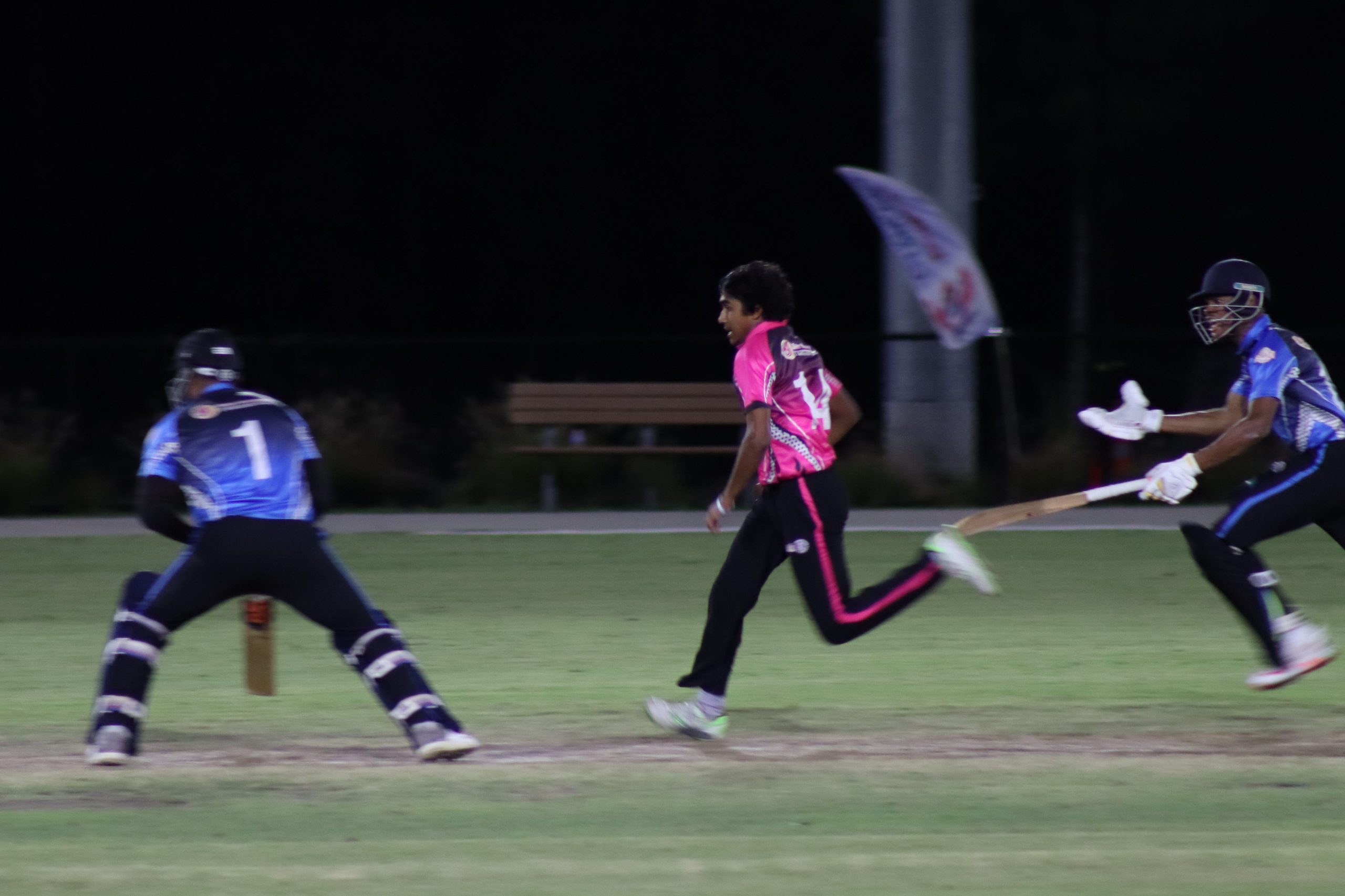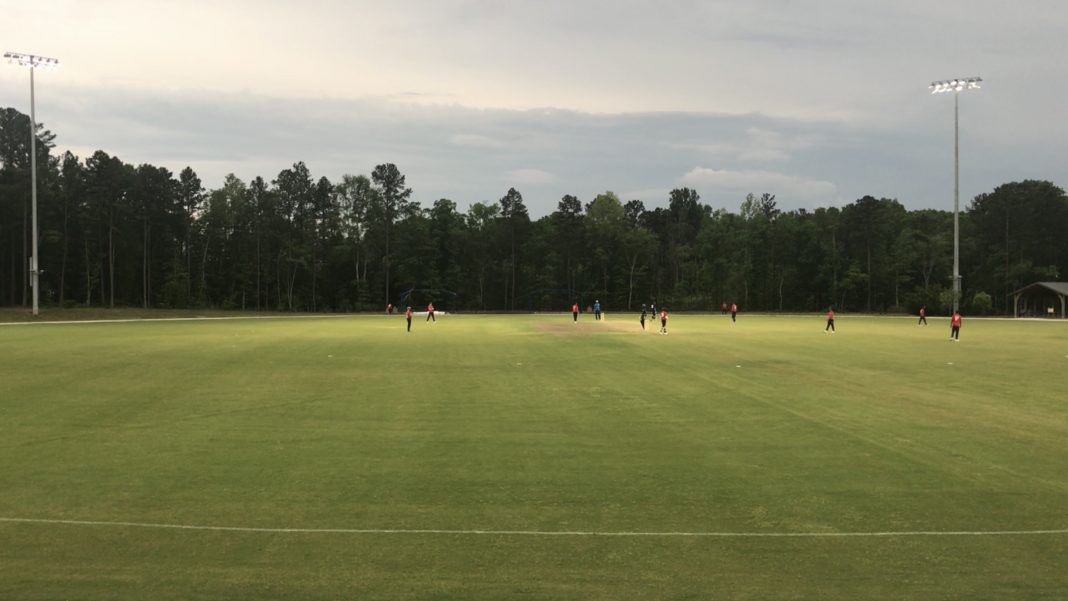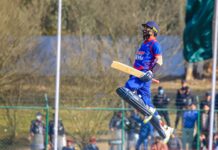Cricket is played far and wide across the United States, and yet pathways to the national team, or to any real future in professional cricket, have never been clearly defined.
Minor League Cricket hopes to help change that by serving as a domestic T20 system, which should give cricketers a platform to earn spots in USAC and MLC teams.
As grass wickets arrive and populate the Minor League, players will be more fairly judged against each other, and the development of quality cricket in the United States will accelerate. Until then, it’s important that we carefully contextualise scores and accomplishments. Part One of Emerging Cricket’s Minor League Cricket review focused on players who excelled on turf. Part Two covered the top performers on artificial surfaces, such as mat and astroturf wickets.
This edition will focus on the Minor League Team U21, highlighting many of the players who make USA Cricket’s future bright and hopeful. It will also review how MiLC teams did in terms of U21 participation.
For starters, let’s look at overall U21 participation in the league. Batsmen under the age of 21 faced 1307 deliveries, scoring 1403 runs for an average of 16.5 and a strike rate of 107.35. Bowlers under the age of 21 delivered 2085 balls (just under 356 overs) for 2598 runs and 98 wickets, which works out to an economy of 7.48 and an average of 26.51. Combining balls faced while batting with balls bowled, and the 77 U-21 players who saw playing time contributed 3392 balls during the exhibition, which is an average of 33.25 balls per innings total from U21 players. The average U21 cricketer saw a total of 44.05 balls of action throughout the tournament’s 51 games.
Now let’s look at the teams. I have graded each team for participation on four categories and weighted the four equally to come up with a final average grade. Grading was done on a curve, with the average value of each category equalling a 70% score, which meant that teams could (and did) score over 100%. The four categories counting toward the overall grade are: U21 Players per eleven, U21 batting innings per game, U21 bowling innings per Game, and U21 total balls per game (batting and bowling combined).

Overall, only eight teams received passing grades, and ten teams received failing grades. Morrisville (188%) narrowly beat out East Bay (186%) for the top honours, thanks to their 4.8 U21 players per playing eleven, and 3.6 U21 batting innings per game. Passing grades ranged from Morrisville’s 188% to Chicago Blasters 68%. Failing grades ranged from Houston’s 58% to DC Hawks 8%.
The original rules for the exhibition season were that each team had to have three U21 players on their roster, with two to be included in every playing eleven. Exceptions were to be made on request. It is important for me to emphasise that this was an exhibition season, and Covid-19 presented unprecedented challenges to every aspect of American life, including cricket. Some U21 players, like Joshua Kind, even live in entirely different states from their Minor League Team, which creates a challenge even in a normal year.
One other point of note is that this grading system is entirely my own, and it was created to help highlight and explore a topic I personally believe is important: that MiLC should focus heavily on its role as a pathway for developing young domestic cricketers.
Challenges aside, it is clear through this data that some teams simply considered their U-21 players as token fielders, and likely would have not played them at all if not for a mandate. Anybody who has ever been a newcomer to a cricket team in this country knows the difference between being in the playing eleven and getting chances.
With USA Cricket’s recent announcement of Zonal Men’s and Men’s Youth Training Groups, we can see how some of the Minor League teams missed a chance to boost their players into zonal consideration. For example, the New England Eagles and the New York Titans finished 17th and 16th place out of 18 respectively in my team grades. They were also the only two teams that did not have a U21 player go on to make a zonal training group. These also represent the only two MiLC teams in the East Zone, meaning the East Zone Training Groups did not include a single MiLC U21 player. Meanwhile, Morrisville and East Bay, our highest graded teams, combined to send 14 U21 players to zonal training groups.
Surprisingly, DC Hawks, the only team not to give batting or bowling to a U21 player in the MiLC exhibition, had three U21 players make a zonal training group.
Justin Geale is the showrunner for Minor League Cricket and Major League Cricket. Justin brings his years of priceless experience running the Indian Premier League (IPL) to the USA. Rules that consider U-21 participation shortcomings seem to be in the works for next season and beyond. ‘Next season there will be a firm set of playing regulations,’ Justin affirmed to Emerging Cricket in a recent call. ‘Youth is a really big focus of this tournament.’
USA national team bowler Rusty Theron, also an ACE Academies coach, clearly went out of his way to ensure the U21 on his Blazers got as many chances as possible. East Bay led the way averaging 3.25 bowling innings per game, an impressive accomplishment considering the presence of veteran performers like Theron, Nick MaClachlan and Josh Dascombe in the Blazers attack.
‘This was a foundation, really, moving into becoming a Minor League Team,’ Rusty told Emerging Cricket of the exhibition season. ‘There’s so much talent out there, like you would have seen, the young guys particularly coming through that can play. But the biggest part of cricket isn’t just the physical ability and talent and skill, but it’s the cricket brain, it’s developing a cricket mind. Those are the things that experienced players can really help with. I think the best way that we’ve looked to do that is to get your youth players and your developing players with the experienced professionals so they can share the field, share training sessions, and learn from each other.’
Minor League Team U21
With Team Turf and Team Mat I was able to select players who fulfilled specific roles, as a selection committee would. For the most part, I had a player pool large enough to comfortably choose openers, top order, middle order, all rounders, specialist spinners and fast bowlers. With 77 U21 players to choose from, many getting only a game or two of experience, and eleven who didn’t bowl or bat in any game, my goal was to pick the best eleven U21 performers, while giving tie-breakers in favour of the player who could fill a needed role. I attempted to diversify selection whenever it was fair to do so.
Rahul Jariwala, Silicon Valley Strikers, Wicket Keeper/Batsman – Featured also in Team Turf, Rahul was at his best in the final game of the tournament, clinching first place with his 77-run performance against the formidable East Bay Blazers. Only 16 years old, and opening the batting for SVS, Rahul was second amongst U21 players in runs with 176 at an average of 22 and a strike rate of 97. His bold performance in one of the biggest games in the tournament epitomised the talent, hunger and courage of this young generation of American cricketers. The young USA U19 keeper also contributed seven catches and two stumpings for the group winners. Rahul was selected last week to the West Men’s Youth Training Group.
Muhammad Abdullah Shah, Morrisville Cardinals, Opening Batsman – Abdullah finished the exhibition with 121 runs from 73 balls in his three innings, topping every U21 player who scored at least three runs in strike rate at 166, at an impressive average of 40.33. His 42 runs on turf at Church Street Park on October 3 paced Morrisville in their one-run thriller against APV. The young slugger has played relatively little organised cricket in his lifetime, but has a passion for the T20 format and references his experience with high school gridiron football and baseball as helping him handle the pressure of opening in big games. Somehow, in spite of his performances, the 19 year old fell through the cracks and was not selected for a Men’s Zonal Training Group.
Sanjay Krishnamurthi, East Bay Blazers, All Rounder – Another U21 player who made our Team Turf, Sanjay was a key player for East Bay. Born in Arizona, Sanjay honed his skills in Bangalore and made the Karnataka U16 state team. Since moving to California, Sanjay has trained hard with Rusty Theron and Josh Dascombe, and has impressed many with his skill and love for the game. After 264 runs from 199 balls at an average of 88, and taking four wickets in 16 overs with an economy of 6.25, all on turf, Sanjay finds himself the youngest of 44 invited to the Men’s Training Group for USA’s preparation for the CWCL2 series in March, and will also train in the West Men’s Zonal Training Group.

Abhiram Bolisetty, Morrisville Cardinals, All Rounder – Abhiram’s exhibition season was a story of resilience and courage. The young North Carolinian had a rough start, giving up 60 runs in four overs and scoring 21 off of 19 balls across his first two batting and bowling innings in Atlanta. Crucially, Abhiram didn’t carry his struggles over to his fielding, as he made several high effort plays, including four big catches, to help Morrisville to their first MiLC win. After that, Abhiram settled down and took five wickets in ten overs for 57 runs in his final three games, adding 57 runs with the bat. His man of the match all-round performance (38 from 34 with the bat; four overs, 23 runs, and four wickets with the ball) in Morrisville’s October 3 win under the lights at his Church Street Park home was MiLC’s most viewed game. Aiming for a spot in the U19 national team, Abhiram was selected for South Men’s Zonal Training Group.
Ali Sheikh, Irving Mustangs, All Rounder – Confident and dynamic, the USA U-19 all rounder played in all eight games for Irving. Ali struggled at times on turf, but finished fourth on the first place Mustangs in runs (105), and played a starring role in Irving’s September 27 win against Austin in Dallas on both sides of the ball, scoring 49 from 35 in the first innings and taking two wickets for 28 runs in his full quota in the second innings. Ali’s left arm orthodox spin found steady success, claiming six wickets for a 6.71 economy across 17 overs. Ali will train with the South West Men’s Youth Training Group.
Rehman Dar, Irving Mustangs, Batsman – Every T20 side could use a quick injection of runs late in the innings, and that’s what Rehman Dar provided for the Mustangs on September 26, when he scored 16 not out off of seven balls with two sixes to set a challenging 211 target against Houston. The Hurricanes ultimately won in the Super Over, but Dar struck again the next day, scoring 30 from 13 from the number five spot on the way to a victory over Austin. Though he struggled in his only turf appearance (12 from 23 on October 3 in Houston), the 18 year old USA U-19 batsman finished sixth amongst U21 in runs with 58 in his three innings. Rahman was also selected to the South West Men’s Youth Training Group.
Heer Patel, Atlanta Param Veers, All Rounder – Heer started the exhibition season with a bang, opening the batting with Darpan Patel and scoring a blistering 49 from 24 balls to help APV set a total of 236, which they defended by only 5 runs against rival Atlanta Fire. In the chase, Heer took a wicket while contributing the lowest economy rating for his side in his four overs. Though his batting production declined, the 17 year old found himself leading all APV bowlers (with at least five overs) in economy, deadening bats to the tune of 6.77 runs per over while taking four wickets in 22 overs. Heer was selected for the South Men’s Youth Training Group.
Rohan Phadke, Morrisville Cardinals, Bowler – The winner of the Best Bowler award for the south group, Rohan did not bat or bowl in the Cardinals first game, an eight wicket loss to APV. In the second game, however, young Phadke only managed to put together the best innings of bowling in the south group. Four overs, 28 runs, and five wickets helped Morrisville maul Atlanta Fire, earning Phadke the Man of the Match award. Rohan also performed brilliantly at home and finished with 14 overs for 95 runs and nine wickets at an economy of 6.79 in the high scoring south group. Rohan was selected for the South Men’s Youth Training Group.
Ruchir Joshi, East Bay Blazers, Bowler – Ruchir played all eight games for East Bay, and received his full quota of bowling in seven of them. Leading all Under 21 bowlers in overs (30), Ruchir took five wickets, but it was his tidy 6.07 economy that cemented his chances and helped give East Bay a reliable platform for their attack. The strong right arm medium fast seamer built pressure with dot balls, which at times were only relieved by his tendency to bowl wides. As the season went on, Ruchir displayed promising growth with only three wides in his final three games, and will certainly effect more wickets as his accuracy improves. Having played domestic cricket in India as recently as 2019, Ruchir does not yet qualify for zonal or national consideration.
Karthik Gattepalli, Irving Mustangs, Bowler – Karthik bowled in only four games, all on turf, but he ended the exhibition with the lowest economy rating of any U-21 bowler at 4.69. His final line of 13 overs, 61 runs, and two wickets helped Irving finish 2-2 on turf in Houston. Part of the Mustang’s ‘Cerberus’ of left arm spinners, Karthik’s economy was even lower than teammate and central group’s Best Bowler award-winner Nosthush Kenjige. In the final game of the season, with first place on the line, Karthik’s two wickets in four overs for 21 runs helped hold Houston to 113/9, which Mustangs batsmen chased easily for a nine wicket win. Karthik will train with the South West Men’s Youth Zonal Training Group.
Dev Thadani, East Bay Blazers, Bowler – Another Blazer in the group, Thadani impressed with seven wickets in his 16 overs across six innings for 108 runs. In an October 4 matchup against the Golden State Grizzlies, Dev’s two wickets for just 22 runs in four overs helped the Blazers bowl out the side and defend a 160 score by 35. Dev was a bright spot in the season finale loss to SVS as the only Blazer bowler to take wickets in the game (four overs, 29 runs, two wickets). Dev’s performances helped earn him a spot in the West Men’s Youth Zonal Training Group.
Honourable Mention
Vatsal Vaghela, Silicon Valley – Another left arm orthodox spinner who took wickets at a low economy rate, Vatsal just barely missed out on Team U21, with three wickets in 14 overs for a 5.14 economy rate. The USA U-19 representative will train with the West Men’s Youth Zonal Training Group.
Sachin Veerasammy, Chicago Blasters – Scored 47 runs in three innings for Chicago Blasters at a strike rate of 138.24. Scored 21 off of nine on October 10 vs the Catchers. Sachin was chosen for the Midwest Men’s Zonal Training Group.
Amrut Pore, Atlanta Fire – Made the most of his lone innings, scoring 39 from 27 in Atlanta Fire’s rebound win against Morrisville on September 20. The 18 year old was not selected for a zonal training group.
Akilesh Reddy Bodugum, Atlanta Fire – Bowled 17 overs for 109 and an impressively low economy rate of 6.41 on the mat in Atlanta. The 20 year old unfortunately missed out on a Men’s Zonal Training Group.
Aditya Padala, Morrisville – He only bowled six overs, but took four wickets for 29 runs and a 4.83 economy rating. 18 years old at the start of the Exhibition season, Aditya missed out on Men’s and Men’s Youth Zonal Training Group selection.
Sohan Bhat, Golden State – Played in seven games, the left arm orthodox all-rounder scored 55 runs and took four wickets in 14 overs at a 6.86 economy. Sohan, 19, is one of many listed here who once represented USA at the U-19 level. Sohan also fell through the zonal selection cracks, likely due to age.
Saad Humayun, Austin – Appearing in five games and bowling in four, Saad didn’t take a wicket in the competition, but stayed under seven runs per over in three of his four innings, ending with an economy of 6.73 in 15 overs. 20 years old, Saad seemed to also find himself in a difficult in-between age, and was not selected for a Men’s Zonal Training Group.
MINOR LEAGUE TEAM U21
Rahul Jariwala, Silicon Valley
Muhammad Abudullah Shah, Morrisville
Sanjay Krishnamurthi, East Bay
Abhiram Bolisetty, Morrisville
Ali Sheikh, Irving
Rehman Dar, Irving
Heer Patel, Atlanta Param Veers
Rohan Phadke, Morrisville
Ruchir Joshi, East Bay
Karthik Gattepalli, Irving
Dev Thanadhi, East Bay
You’re reading Emerging Cricket — brought to you by a passionate group of volunteers with a vision for cricket to be a truly global sport, and a mission to inspire passion to grow the game.
Be sure to check out our homepage for all the latest news, please subscribe for regular updates, and follow EC on Twitter, Facebook, LinkedIn and YouTube.
Don’t know where to start? Check out our features list, country profiles, and subscribe to our podcast.
Support us from US$2 a month — and get exclusive benefits, by becoming an EC Patron.







